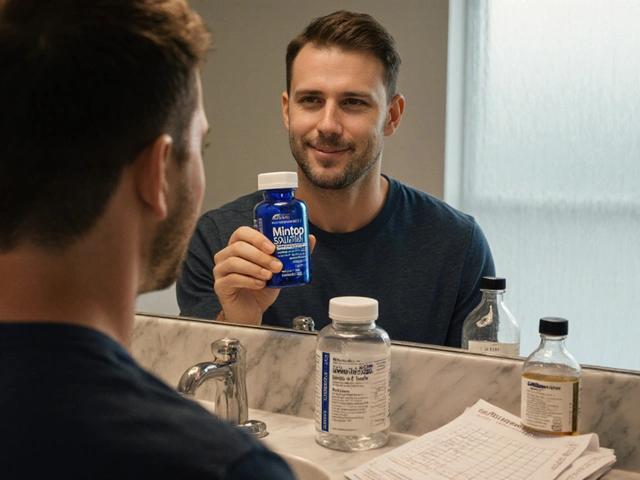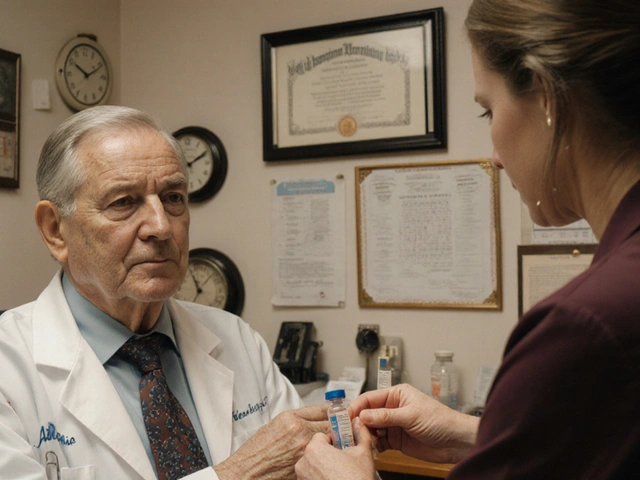Dry Skin: Fast Relief and Everyday Care
Dry skin can feel tight, itchy, or flaky and show up anywhere — face, hands, or legs. You don’t need a complicated routine to fix it. Small changes to how you bathe, what you apply, and a couple of product choices will make a big difference fast.
Simple Daily Routine
Start with shorter showers in lukewarm water. Hot water strips natural oils and makes dryness worse. Use a mild, fragrance-free cleanser — think cream or syndet bar, not a foaming soap. After washing, pat your skin dry with a towel; don’t rub.
Moisturize right after you towel off, ideally within three minutes. Locking in moisture is key. Look for moisturizers that contain a humectant (like glycerin or hyaluronic acid) plus an occlusive (like petrolatum or mineral oil) and ceramides to rebuild the skin barrier. For very dry spots use a thicker cream or ointment rather than a lotion — ointments work best overnight or on hands and feet.
For face care, choose fragrance-free products labeled for dry or sensitive skin. Use gentle sunscreen daily; many dry-skin people avoid sun protection because of texture, but mineral sunscreens (zinc oxide or titanium dioxide) are often less irritating.
Hands and lips need extra care. Wear gloves for cold weather and when washing dishes. Use a thick hand cream after every wash and a petrolatum-based lip balm at night or before going outside.
Causes, Triggers, and Quick Fixes
Common causes include cold or dry weather, indoor heating, long hot showers, harsh soaps, and certain medicines (like isotretinoin or some diuretics). Underlying issues such as eczema, hypothyroidism, or nutritional gaps can also cause persistent dryness. If you spot cracks that bleed or areas that swell or have pus, treat the area as possibly infected and see care right away.
Use a humidifier at home during dry months to add moisture to the air. Swap fragranced laundry detergent for a mild, dye-free one. Avoid alcohol-based toners or strong chemical exfoliants if your skin is flaky or tight; gentle chemical exfoliation once a week can help in some cases, but don’t overdo it.
If your skin itches a lot, short-term use of an over-the-counter 1% hydrocortisone cream can help calm inflammation — use it only for a few days on small areas. For persistent flares or large areas affected, your doctor can prescribe stronger topical steroids, prescription moisturizers, or check for underlying causes.
Dry skin usually responds to routine changes and consistent moisturizing. If your skin won’t improve after a couple of weeks of care, is painful, or shows signs of infection, book a visit with a dermatologist. They’ll check for eczema, fungal issues, or other conditions and guide safe treatment options that work for your skin type.

Hydrocortisone for Dry Skin: A Moisturizing Treatment to Consider
I recently came across a fantastic moisturizing treatment for dry skin that I think you all should consider - Hydrocortisone. This topical steroid not only helps reduce inflammation and redness but also works wonders in locking in moisture for those of us with dry skin. I've been using it for a short while now, and I'm truly impressed by the results. If you're struggling with dry, irritated skin, I highly recommend giving Hydrocortisone a try. Remember, it's always best to consult with a dermatologist or healthcare professional before trying any new skincare products!
Health and WellnessLatest Posts
Tags
- online pharmacy
- medication
- dietary supplement
- side effects
- online pharmacy UK
- medication safety
- mental health
- impact
- online pharmacies
- dosage
- skin health
- health
- pain relief
- dietary supplements
- massage therapy
- medication side effects
- eye inflammation
- health benefits
- mental health treatment
- thyroid medication




